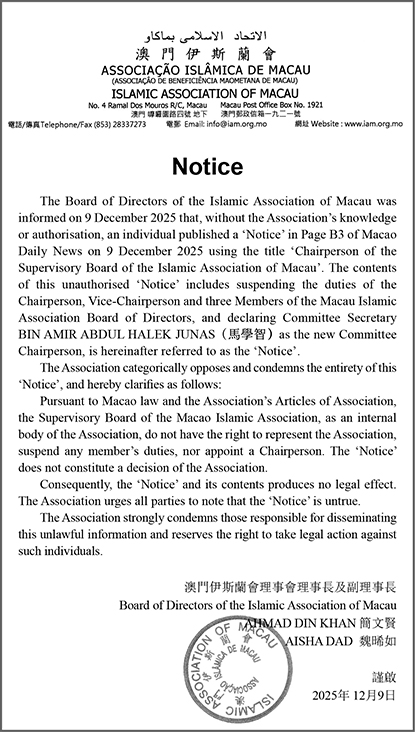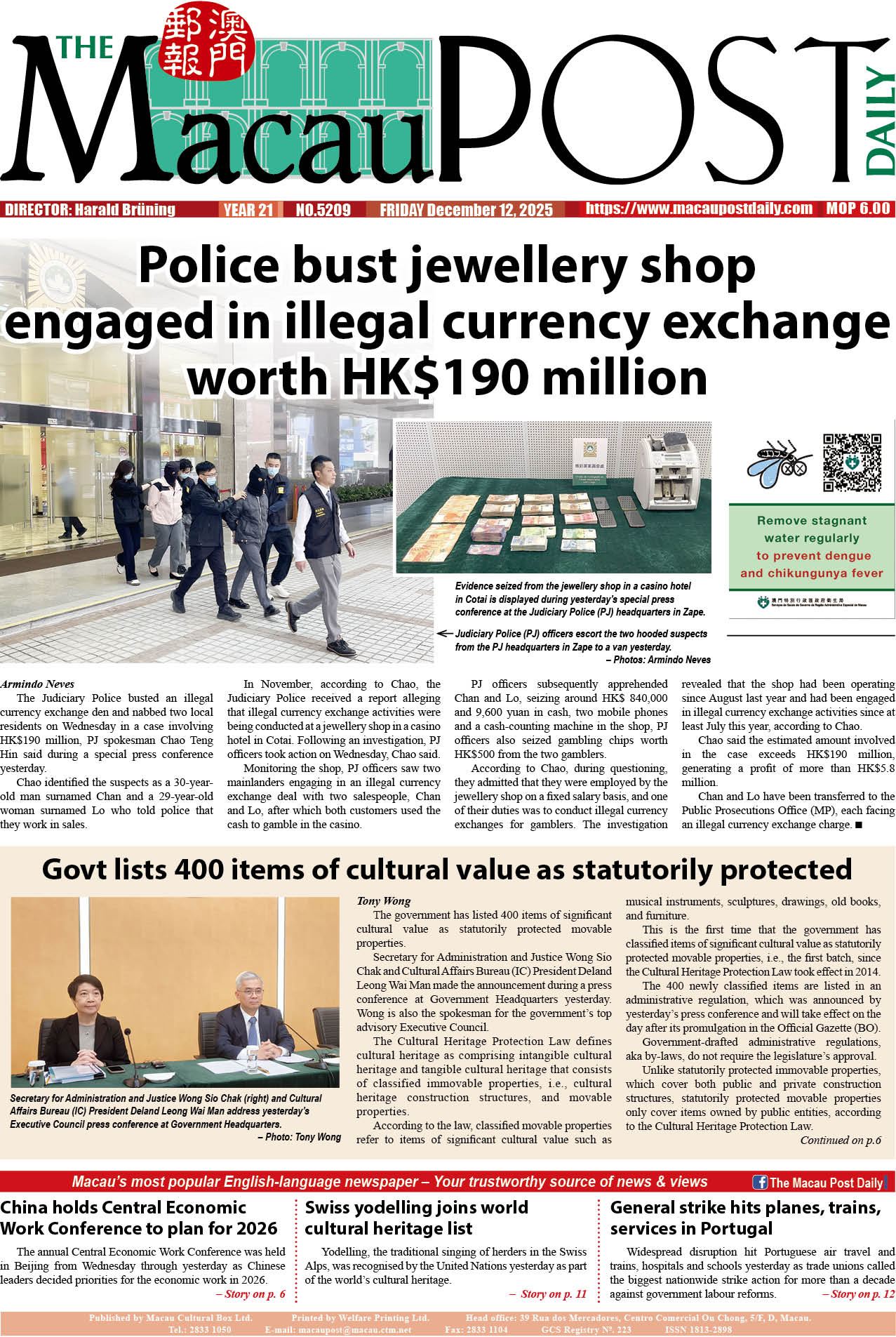EVERY MAJOR NEWS outlet in the world is reporting that two million people, well over a quarter of our population, joined a single protest.
It’s an astonishing thought that filled an enthusiastic old marcher like me with pride. Unfortunately, it’s almost certainly not true.
A march of two million people would fill a street that was 58 kilometres long, starting at Victoria Park in Hong Kong and ending in Tanglangshan Country Park in Guangdong, according to one standard crowd estimation technique.
If the two million of us stood in a queue, we’d stretch 914 kilometres, from Victoria Park to Thailand. Even if all of us marched in a regiment 25 people abreast, our troop would stretch towards the mainland Chinese border.
Yes, there was a very large number of us there. But getting key facts wrong helps nobody. Indeed, it could hurt the protesters more than anyone.
For maths geeks only, here’s a discussion of the actual numbers that I hope will interest you whatever your political views.
DO NUMBERS MATTER?People have repeatedly asked me to find out “the real number” of people at the recent mass rallies in Hong Kong.
I declined for an obvious reason: There was a huge number of us. What does it matter whether it was hundreds of thousands or a million? That’s not important.
But my critics pointed out that the word “million” is right at the top of almost every report about the marches. Clearly it IS important.
FIRST, THE SCIENCEIn the West, drone photography is analysed to estimate crowd sizes.
This reporter apologises for not having found a comprehensive database of drone images of the Hong Kong protests.
But we can still use related methods, such as density checks, crowdflow data and impact assessments. Universities which have gathered Hong Kong protest march data usingscientific methods include Hong Kong Polytechnic University, Hong Kong University of Science and Technology, University of Hong Kong, and Hong Kong Baptist University.
DENSITY CHECKS
Figures gathered in the past by Hong Kong Polytechnic specialists using satellite photo analysis found a density level of one square metre per marcher. Modern analysis suggests this remains roughly accurate.
I know from experience that Hong Kong marches feature long periods of normal spacing (80 to 150 sq cm or more per person, walking) and shorter periods of tight spacing (46 sq cm or less per person, mostly standing).
JOINERS AND SPEED
We need to include people who join halfway. In the past, a Hong Kong University analysis using visual counting methods cross-referenced with one-on-one interviews indicated that estimates should be boosted by 12 percent to accurately reflect late joiners.
These days, we’re much more generous in estimating joiners.
As for speed, a Hong Kong Baptist University survey once found a passing rate of 4,000 marchers every 10 minutes.
Videos of the recent rallies indicate that joiner numbers and stopstart progress were highly erratic and difficult to calculate with any degree of certainty.
DISTANCE MULTIPLIED BY DENSITYBut scientists have other tools. We know the walking distance between Victoria Park and Tamar Park is 2.9 kilometres. Although there was overspill, the bulk of the marchers went along Hennessy Road in Wan Chai, which is about 25 metres wide, and similar connected roads, some wider, some narrower.
Steve Doig, a specialist in crowd analysis approached by the Columbia Journalism Review (CJR), analysed an image of Hong Kong marchers to find a density level of 7,000 people in a 210-metre space. Although he emphasises that crowd estimates are never an exact science, that figure means one million Hong Kong marchers would need a street 18.6 miles long – which is 29 kilometres.
Extrapolating these figures for the June 16 claim of two million marchers, you’d need a street 58 kilometres long.
Could this problem be explained away by the turnover rate of Hong Kong marchers, which likely allowed the main (three kilometre) route to be filled more than once?
The answer is yes, to some extent. But the crowd would have to be moving very fast to refill the space a great many times over in a single afternoon and evening. It wasn’t.While I can walk the distance from Victoria Park to Tamar in 41 minutes on a quiet holiday afternoon, doing the same thing during a march takes many hours.
More believable: There was a huge number of us, but not a million, and certainly not two million.
IMPACT MEASUREMENTS
A second, parallel way of analysing the size of the crowd is to seek evidence of the effects of the marchers’ absence from their normal roles in society.
If we extract two million people out of a population of 7.4 million, many basic services would be severely affected while many others would grind to a complete halt.
Manpower-intensive sectors of society, such as transport, would be badly affected by mass absenteeism. Industries which do their main business on the weekends, such as retail, restaurants, hotels, tourism, coffee shops and so on would be hard hit. Round-the-clock operations such as hospitals and emergency services would be severely troubled, as would under-the-radar jobs such as infrastructure and utility maintenance.
There seems to be no evidence that any of that happened in Hong Kong.
HOW DID WE GET INTO THIS MESS?
To understand that, a bit of historical context is necessary.
In 2003, a very large number of us walked from Victoria Park to Central. The next day, newspapers gave several estimates of crowd size.
The differences were small. Academics said it was 350,000 plus. The police counted 466,000. The organisers, a group called the Civil Rights Front, rounded it up to 500,000.
No controversy there. But there was trouble ahead.
THINGS FALL APART
At a repeat march the following year, it was obvious to all of us that our numbers were far lower than the previous year. The people counting agreed: the academics said 194,000 and the police said 200,000.
But the Civil Rights Front insisted that there were MORE than the previous year’s march: 530,000 people.
The organisers lost credibility even with us, their own supporters. To this day, we all quote the 2003 figure as the high point of that period, ignoring their 2004 invention.
THE TRUTH COUNTS
The organisers had embarrasse the marchers. The following year several organisations decided to serve us better, with detailed, scientific counts.
After the 2005 march, the academics said the headcount was between 60,000 and 80,000 and the police said 63,000. Separate accounts by other independent groups agreed that it was below 100,000.
But the organisers? The Civil Rights Front came out with the awkward claim that it was a quarter of a million. Ouch. (This data is easily confirmed from multiple sources in newspaper archives.)
AN UNEXPECTED TWIST
But then came a twist. Some in the Western media chose to present ONLY the organiser’s “outlier” claim.
“Dressed in black and chanting ‘one man, one vote’, a quarter of a million people marched through Hong Kong yesterday,” said the Times of London in 2005.
“A quarter of a million protesters marched through Hong Kong yesterday to demand full democracy from their rulers in Beijing,” reported the UK Independent.
It became obvious that international media outlets were committed to emphasising whichever claim made the Hong Kong government (and by extension, Beijing) look as bad as possible. Accuracy was nowhere in the equation.
STRATEGICALLY CHOSEN
At universities in Hong Kong, there were passionate discussions about the apparent decision to pump up the numbers as a strategy, with the international media in mind. Activists saw two likely positive outcomes.
First, anyone who actually wanted the truth would choose a middle point as the “real” number: thus it was worth making the organisers’ number as high as possible. (The police could be presented as corrupt puppets of Beijing.)
Second, international reporters always favoured the largest number, since it implicitly criticised China. Once the inflated figure was established in the Western media, it would become the generally accepted figure in all publications.
Both of the activists’ predictions turned out to be bang on target. In the following years, headcounts by social scientists and police were close or even impressively confirmed the other – but were ignored by the agenda-driven international media, who usually printed only the organisers’ claims.
SKIP THIS SECTION
Skip this section unless you want additional examples to reinforce the point.
In 2011, researchers and police said that between 63,000 and 95,000 of us marched. Our delightfully imaginative organisers multiplied by four to claim there were 400,000 of us.
In 2012, researchers and police produced headcounts similar to the previous year: between 66,000 and 97,000. But the organisers claimed that it was 430,000. (These data can also be easily confirmed in any newspaper archive.)
SKIP THIS SECTION TOO
Unless you’re interested in the police angle. Why are police figures seen as lower than others? On reviewing data, two points emerge.
First, police estimates rise and fall with those of independent researchers, suggesting that they function correctly: they are not invented. Many are slightly lower, but some match closely and others are slightly higher. This suggests that the police simply have a different counting method.
Second, police sources explain that live estimates of attendance are used for “effective deployment” of staff. The number of police assigned to work on the scene is a direct reflection of the number of marchers counted. Thus officers have strong motivation to avoid deliberately under-estimating numbers.
RECENT MASS RALLIES
Now back to the present: this hot, uncomfortable summer.
Academics put the 2019 June 9 rally at 199,500, and police at 240,000. Some people said the numbers should be raised or even doubled to reflect late joiners or people walking on parallel roads. Taking the most generous view, this gave us total estimates of 400,000 to 480,000.
But the organisers, God bless them, claimed that 1.03 million marched: this was four times the researchers’ conservative view and more than double the generous view.
The addition of the “.03m” caused a bit of mirth among social scientists. Even an academic writing in the rabidly pro-activist Hong Kong Free Press struggled to accept it. “Undoubtedly, the anti-amendment group added the extra .03 onto the exact one million figure in order to give their estimate a veneer of accuracy,” wrote Paul Stapleton.
MIND-BOGGLING ESTIMATE
But the vast majority of international media and social media printed ONLY the organisers’ eyebrowraising claim of a million plus—and their version soon fed back into the system and because it became the “accepted” number. (Some mentioned other estimates in early reports and then dropped them.)
The same process was repeated for the following Sunday, June 16, when the organisers’ frankly unbelievable claim of “about two million” was taken as gospel in the majority of international media.
“Two million people in Hong Kong protest China’s growing influence,” reported Fox News.
“A record two million people – over a quarter of the city’s population” joined the protest, said The Guardian.
“Hong Kong leader apologises as TWO MILLION take to the streets,” said the Sun newspaper in the UK.
Friends, colleagues, fellow journalists— what happened to fact-checking? What happened to healthy scepticism? What happened to attempts at balance?
CONCLUSIONS?
I offer none. I prefer that you do your own research and draw your own conclusions. This is just a rough overview of the scientific and historical data by a single oldschool citizen-journalist working in a university coffee shop.
I may well have made errors on individual data points, although the overall message, I hope, is clear.
Hong Kong people like to march.
We deserve better data.
We need better journalism. Easily debunked claims like “more than a quarter of the population hit the streets” help nobody.
International media, your hostile agendas are showing. Raise your game.
Organisers, stop working against the scientists and start working with them.
Hong Kong people value truth.
We’re not stupid. (And we’renot scared of maths!)









